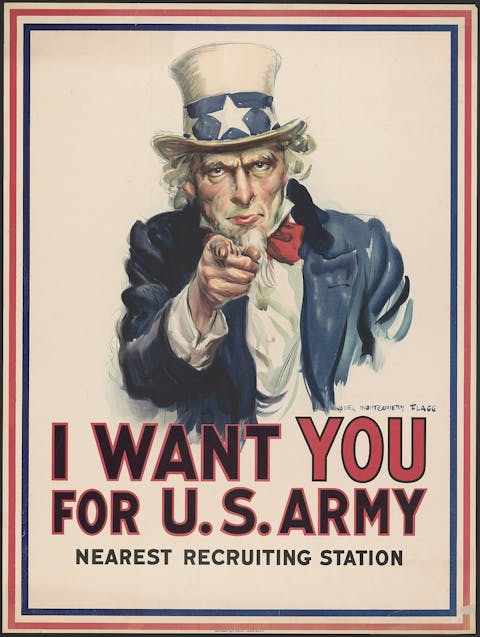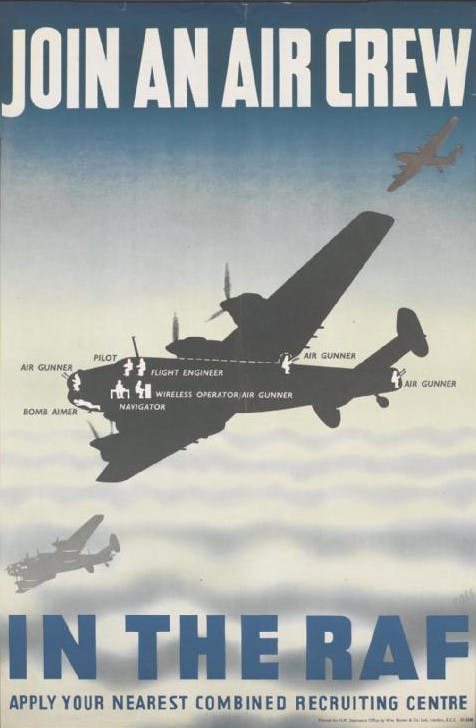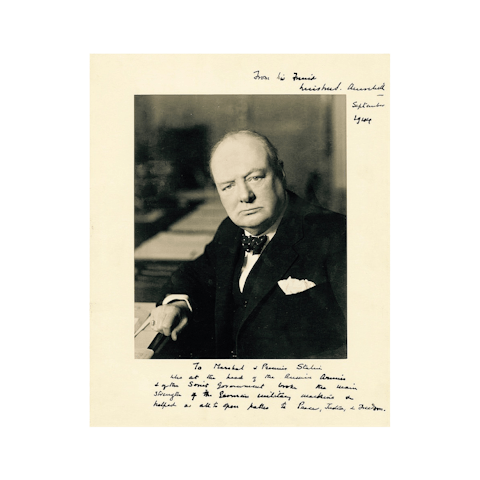Buyer's Guide to Political Memorabilia
Written by Alexander Bitar
Since the advent of radio and television in the 20th century, as well as the expansion of the full right to vote to any citizen, the world of politics has become more accessible than ever. With that, the interest in political memorabilia has increased, and many new collectors have been born.
"I Want You For U.S. Army" poster, 1917. (Public Domain)
What Is Political Memorabilia?
The simple explanation of political memorabilia is items connected directly or indirectly to politicians and politics in general. It can be everything from a campaign poster for Ronald Regan's 1980 campaign to a hat that's been personally owned by Winston Churchill to a small campaign pin.
Why Do People Collect Political Memorabilia?
There are mainly three different reasons for collectors to buy political memorabilia:
a) As an investment.
b) As political support for a specific party or cause.
c) Due to historical interest and a passion for collection separated from any specific political rationale. Through the collection of political memorabilia, people keep a record of the events of a particular moment in history.

"I Want You For U.S. Army" poster, 1917. (Public Domain)
Are Political Memorabilia a Good Investment?
Overall, it's not necessarily good investments that will give great returns, but if you find the right items, then the value can increase a lot over the years. From an investment perspective, the more well-known the politician is – the better the possibilities for suitable investments. A president is always of greater interest than a vice president, and so on. The best names, such as John F. Kennedy, Abraham Lincoln, Nelson Mandela, and Winston Churchill, are always safe cards.

"Join an Air Crew- in the RAF" poster from 1930. (Public Domain)
What To Know Before Buying Political Memorabilia
It's always important to do your research. The single most vital element is to buy authentic items. Wherever money is involved, so is fraud. Political memorabilia is not an exception, as there are many fake items out there, particularly signed items.
Like any other memorabilia, political memorabilia is often purchased for sentimental reasons, but that does not mean it cannot also be seen as an investment. If you are hoping the piece will be a wise investment, you must do your research. The best way to know the item's value is to have the item(s) appraised by Value My Stuff.
Follow these easy steps to value your political memorabilia.
How To Appraise Political Memorabilia
Only a professional can provide you with a sure and particular range of value and an up-to-date price for political memorabilia by using their experience and expertise to eliminate as much chance for misstep and error as possible.
There are several aspects experts must take into account to appraise political memorabilia. Luckily, here at Value My Stuff, experts in the field can provide professional appraisal services so that you can take the necessary steps to discover how much your political memorabilia is worth today! Start Your Political Memorabilia Appraisal Here!

Campaign button for Abraham Lincoln, 1860. (Public Domain)
How To Authenticate Political Memorabilia?
The only thing a third-party authenticator can authenticate in terms of political memorabilia is autographs and handwriting. In addition, some authenticators can also authenticate tickets and posters connected to political events.
The most common authenticators for autographs and handwriting are PSA/DNA, JSA, and Beckett. The fee can vary between $25 to $250.
What To Look For When Buying Political Memorabilia
The most important factor is authenticity. If the item isn't authentic, it doesn't matter how good the condition and other factors are. It's, therefore, of the highest priority to make sure that the item is indeed authentic.
Condition
The first aspect of your item to notice when wishing to ascertain its value is its condition. Naturally, the more new your item is, the more it will generally be worth. However, political memorabilia covers a broad range of possible items, including anything from a Bill Clinton bumper sticker to an autograph signed by a founding father of America; thus, depending on the age and rarity of your item, there may be some allowances made for compromise in physical quality. Either way, it is essential to look out for any damage, such as rips, tears, fading, denting, broken parts, and so on
Rarity
Next, one must take into account the degree of rarity your item possesses. Your campaign t-shirt may be like new, but if it is only from the most recent election, it likely won't be worth anything more than what you originally bought it for, while a letter signed by Abraham Lincoln will be worth millions even if it is faded or a bit frayed at the edges.
Significance
Another aspect of your item to take into consideration is its significance. This will be the most crucial feature of your item to consider when ascertaining its value, as the significance of an item will directly correspond with its demand on the collectible market. Throughout history, some political figures have been more well-known than others, and whether this is for a good or bad reason, items associated with these famous or infamous people will garner more interest and thus be worth more. Likewise, suppose an item is associated with a specific famous event during a political reign or candidacy. In that case, it will have a higher value than something generic like a thank you letter or party invitation.

A signed photograph of Winston Churchill, inscribed to Joseph Stalin. (Alexander Bitar History)
How Much Is My Political Memorabilia Worth?
Sure, you can, of course, search online to find out what other similar items have sold for, but the very best way to get an up-to-date appraisal is to seek help from an expert in the field.
If you are unsure of the value of Political Memorabilia you are interested in purchasing or want to make sure it looks legitimate, our experts are here to help. Press here for more information.

